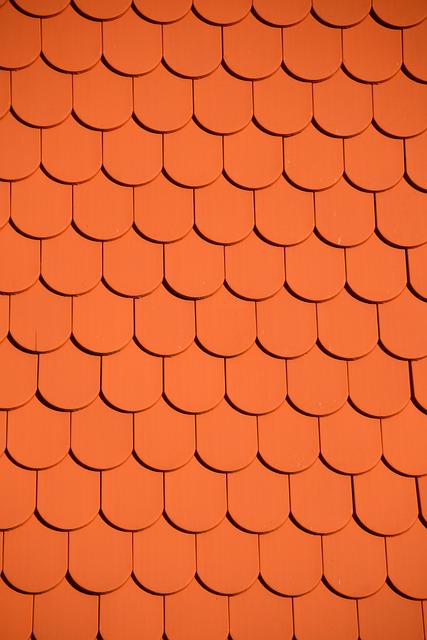Severe weather can cause skylight or vent damage, leading to costly roof leaks. Homeowners should act swiftly, conducting regular inspections and selecting high-quality replacement parts for affected areas to prevent water intrusion. Proper maintenance, quick debris clearance, and annual professional inspections are key to avoiding residential emergency roof leak repairs.
In the face of unexpected debris damage, prompt action is crucial for effective residential emergency roof leak repair. This guide navigates the process of replacing skylights or vents, addressing critical steps from identifying damaged areas to implementing preventive measures. Understanding how to swiftly replace these components ensures not just temporary fixes but also long-term protection against future leaks. By following this step-by-step approach, homeowners can confidently restore their homes’ integrity and maintain a dry, safe living space.
Understanding Residential Emergency Roof Leak Repair
When a storm hits and debris damages your skylights or vents, immediate action is crucial to prevent further water intrusion and potential structural damage. Residential emergency roof leak repair is a specialized service designed to address these sudden issues swiftly. The goal is to temporarily patch and seal the leaks until more permanent repairs can be scheduled.
Professional roofers equipped with specialized tools and expertise assess the damage, locate weak spots, and implement quick fixes using waterproof materials. These temporary solutions not only stop water from entering your home but also give you time to plan for a thorough repair, ensuring your home remains dry and safe during and after the emergency.
Identifying Damaged Skylights or Vents
Damaged skylights or vents are often a result of unexpected events like severe weather conditions, falling debris, or even wildlife intrusion. Homeowners should be vigilant in identifying these issues, especially after storms or strong winds. Regular inspections can help catch potential problems early on, preventing further damage and costly repairs.
In the event of a residential emergency roof leak repair due to damaged skylights or vents, it’s crucial to act swiftly. Signs of trouble include visible water stains on ceilings or walls, mold growth, or unusual musty odors. If left unattended, these issues can escalate into larger, more expensive damage. Promptly addressing a skylight or vent that has been compromised is key to maintaining a dry, healthy home environment.
Gathering Materials for Replacement
When it comes to replacing skylights or vents damaged by debris, especially in a residential setting, having the right materials is key. Homeowners should gather high-quality replacement parts suitable for their specific model and type of roofing system. This includes new skylights or vents that are weatherproof and designed to withstand local climate conditions, ensuring they don’t become a source of future leaks.
For a seamless repair, consider purchasing sealing compounds and flashing materials compatible with your existing setup. Many hardware stores offer a range of options for residential emergency roof leak repairs, allowing you to quickly restore functionality and prevent further damage caused by water intrusion.
Step-by-Step Guide to Replacing Skylights or Vents
Replacing a skylight or vent that’s been damaged by debris is a straightforward process that every homeowner should know how to tackle, especially in cases of residential emergency roof leak repairs. Here’s a step-by-step guide to ensure the job is done efficiently and effectively:
1. Safety First: Start by ensuring your safety. Put on gloves and protective eyewear. If the skylight or vent is high up, consider using a sturdy ladder and someone to assist you for stability.
2. Inspect and Remove Debris: Carefully inspect the damaged area to assess the extent of debris accumulation. Use tools like a broom or vacuum to remove all loose debris from the broken skylight or vent.
3. Acquire Necessary Materials: Gather replacement parts, which can usually be purchased at local hardware stores. You’ll need a new skylight or vent that matches your existing one in size and style. Don’t forget sealing caulk for a watertight seal.
4. Replace the Old Unit: Remove the old skylight or vent by unscrewing any securing fixtures. Lift it out carefully, taking note of how it was installed for reference.
5. Install the New Unit: Position the new skylight or vent in place, ensuring it’s aligned correctly. Secure it with screws or brackets, following the manufacturer’s instructions for proper sealing and fastening.
6. Seal and Test: Apply caulk around the edges to create a watertight seal. Once dry, test for any leaks by turning on your shower or running water near the vent to ensure its effectiveness in preventing residential emergency roof leak repairs.
Preventive Measures and Future Maintenance Tips
To prevent future damage from debris, regular inspection and maintenance of your roof and skylights/vents are crucial. During intense storms or high winds, inspect your roof for any signs of damage, including missing shingles or damaged flashing. Promptly fixing these issues can stop small problems from escalating into costly repairs.
For existing skylights or vents, consider investing in impact-resistant or storm-rated replacements to better protect against debris. Regular cleaning of these openings also helps ensure optimal performance and prevents blockages that could lead to emergency roof leak repair situations. Schedule professional inspections annually to assess the condition of your roofing system and make necessary repairs or upgrades, thereby safeguarding your home from potential water damage caused by compromised skylights or vents.
In the face of unexpected debris damage to skylights or vents, a swift understanding of residential emergency roof leak repair becomes indispensable. By quickly identifying the affected areas and gathering suitable materials, homeowners can efficiently undertake replacement repairs. Following a detailed step-by-step guide ensures the process is seamless and effective. Equipped with knowledge of preventive measures and future maintenance tips, residents can protect their homes from similar incidents, maintaining a secure and comfortable living environment.
